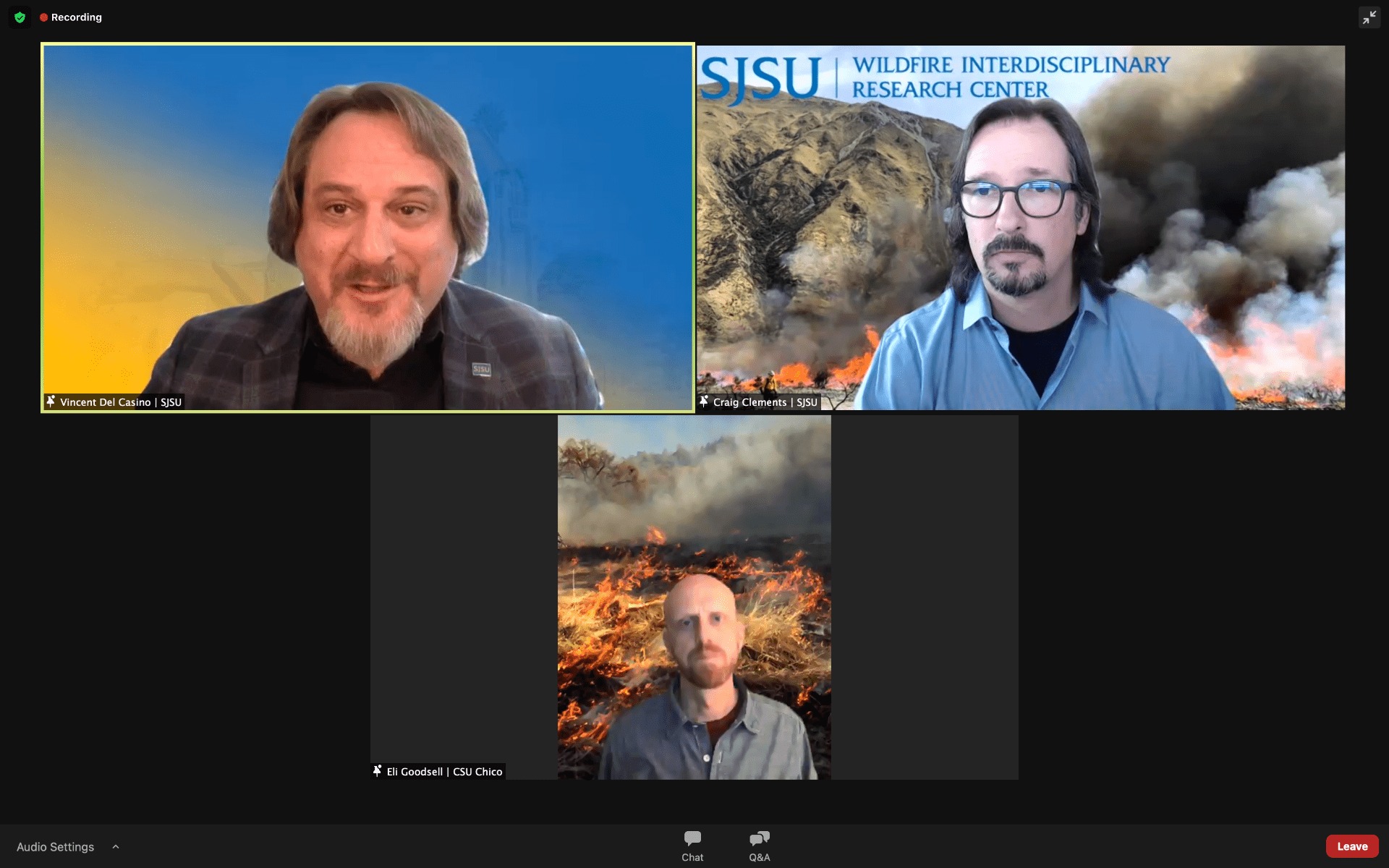
(L-R) Vincent J. Del Casino, SJSU Provost, Eli Goodsell, Director of Big Chico Creek Ecological Reserves, California State University, Chico, Craig Clements, Professor and Director of the Wildfire Interdisciplinary Research Center, San José State University
Wildfire is one of the most critical issues facing California in the 21st century. According to CalFire, five of the top 20 wildfires in California occurred in 2020, including the largest single fire in state history. The agency reports a record 4.2 million acres burned,10,500 structures damaged or destroyed, and 33 people killed due to wildfires in 2020 alone.
To address the problem, San José State University brought together wildfire experts from across the California State University (CSU) system at the Addressing Wildfire and Smoke Impacts in California briefing on January 15, 2021.
California State Senator John Laid, representing District 17, provided opening remarks at the briefing.
“Simply put, we are at an inflection point about wildland fire in California,” Senator Laird said. “We have to work to make sure we change how California responds, and that is the important message of today.”
Wildfire experts from eight CSU campuses participated in the briefing, including:
- Lisa Bentley, Assistant Professor, Sonoma State University
- Craig Clements, Professor and Director of the Wildfire Interdisciplinary Research Center, San José State University
- Eli Goodsell, Director of Big Chico Creek Ecological Reserves, California State University, Chico
- Megan Jennings, Assistant Adjunct Professor and Director of the Institute for Ecological Monitoring and Management, San Diego State University
- Jeff Kane, Associate Professor and Director of the Wildland Fire Laboratory, Humboldt State University
- Matt E. Rahn, Director of the Environmental Leadership Institute, California State University, San Marcos
- Michael Thomas, Retired Chief for Los Angeles Fire Department and Assistant Professor at CAL State, LA
- Dan Turner, Interim Director of the Wildland Urban Interface Institute, California Polytechnic State University
The experts discussed the impacts of climate change on landscapes and species; the need to look at the wildland-urban interface and community build-outs; the risk to vulnerable populations, especially indigenous communities and those that have been impacted by wildfires already; and the massive economic impacts of wildfires.
Each CSU representative also talked about how their campus is helping to mitigate wildfires and wildfire smoke impacts through research, analysis, state-of-the-art prediction tools, and educating future wildfire scientists.
SJSU Professor and Director of the Wildfire Interdisciplinary Research Center Craig Clements told participants, “Our Fire and Smoke Prediction System (WRF-SFIRE) is the most advanced forecasting tool in the nation. We ran it operationally over the fires in the Bay Area all fire season. We hope to run it over the entire state of California in 2021 to protect communities from smoke impacts better. To do this, we will need increased computing resources.”
More than 220 people, including local and state legislative staff, government agency officials, industry and academic representatives attended the virtual briefing.
“At the CSU, we are tackling this fast-growing problem head-on by making investments in leading-edge fire research, both basic and applied,” said SJSU Provost Vincent J. Del Casino, who moderated the briefing. “We are also passionate about educating the next generation of fire scientists at both the undergraduate and graduate level. Workforce development, which builds resilience in communities and natural environments, is a key part of the DNA of the CSU.”
The recording of the Addressing Wildfire and Smoke Impacts in California briefing is here
Learn more about SJSU’s research and work related to wildfires:
Wildfire Interdisciplinary Research Center at SJSU
